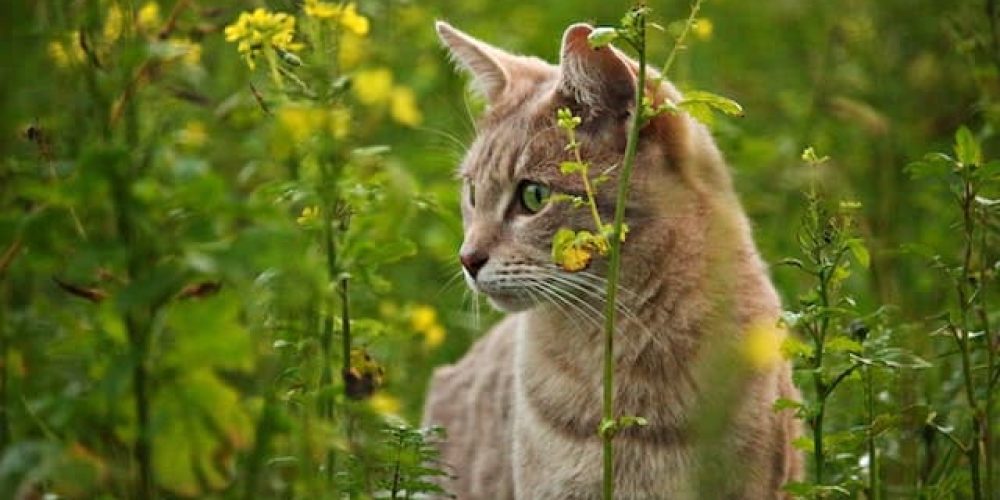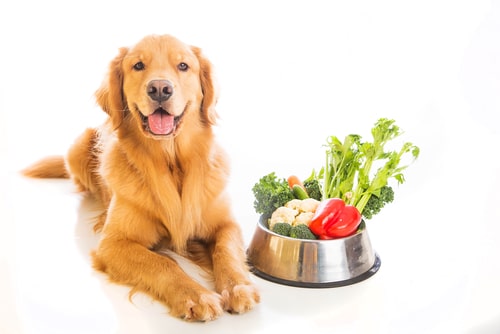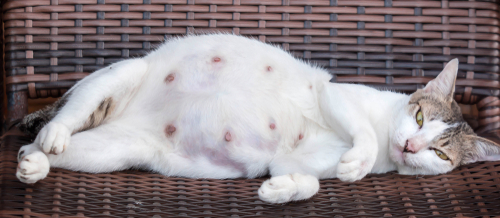Ingestion of some plants can be life-threatening for pets, even in small amounts. Other plants are considered non-toxic, but they may still cause upset stomachs if eaten in large amounts. Always seek advice from a veterinarian if your pet has been in contact with or ingested any plants.
What to do if your pet has come in contact with a plant
- Remove your pet or the plant from the area so there is no further contact.
- If there is any part of the plant on your pet’s fur or in their mouth, make sure to remove as much as possible.
- Take photos of the plant if you do not know its full name.
- If your pet has eaten some of the plant, make a note of how much has been ingested. Also, take note of what time they came in contact with the plant.
- Contact a vet with all of the information you have, and they will advise what to do next. Do this even if your pet is not showing any symptoms.
- Your vet may suggest contacting the animal poison line if the plant is not well known. This is a 24-hour specialised emergency service in the UK; costs apply.
Some plants can cause severe symptoms such as organ failure, seizures, and death. The sooner you get your pet treated, the better the outcome. Do not delay.
Call our Joii vets if you think your pet has been in contact with a poisonous plant.
Common poisonous plants
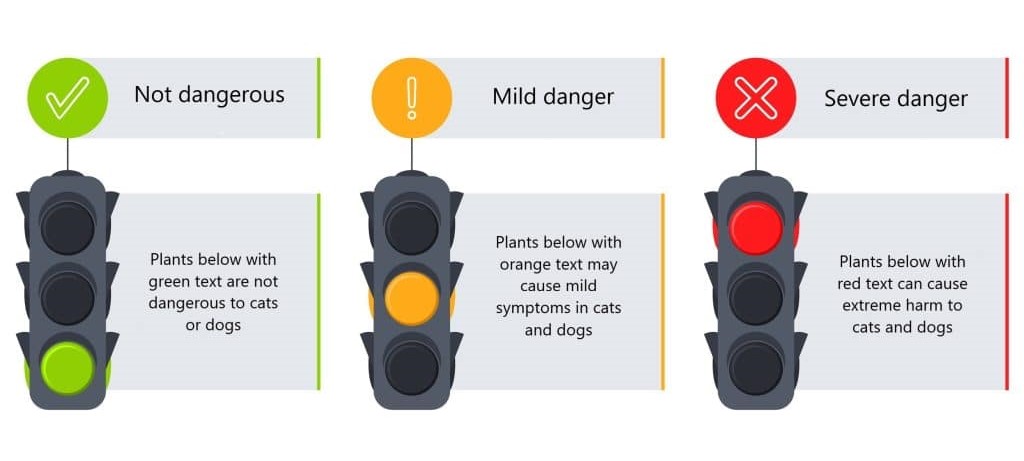
Indoor
Amaryllis
- Toxic to cats and dogs. May also be found outdoors in autumn and winter.
- Stalks, flowers, and bulbs. Bulbs have the highest concentration of the toxin.
- Symptoms include vomiting, diarrhoea, lethargy, tremors, and seizures.
Aloe Vera
- Toxic to cats and dogs. The most toxic part is the yellow sap.
- Symptoms include vomiting, diarrhoea, and lethargy.
Cannabis
- Toxic to cats and dogs.
- Symptoms include vomiting, weakness, and behavioural changes.
Dieffenbachia (Dumb cane)
- Toxic to cats and dogs.
- Can irritate the mouth. Symptoms include swelling of the tongue and lips, ulcers, blisters, drooling, and vomiting.
Dracaena (Corn plant)
- Toxic to both cats and dogs.
- Symptoms include drooling, lethargy, reduced appetite, and vomiting. Cats may show more severe signs, including difficulty breathing.
Ivy, both English (Hedera) and Pothos (Epipremnum Aureum)
- Toxic to cats and dogs. Can also be found outdoors in all seasons. All parts of the plant can be toxic.
- Symptoms include irritation of the mouth, drooling, vomiting, and diarrhoea.
Lilies, true lilies (Lilium sp) and daylilies (Hemerocallis)
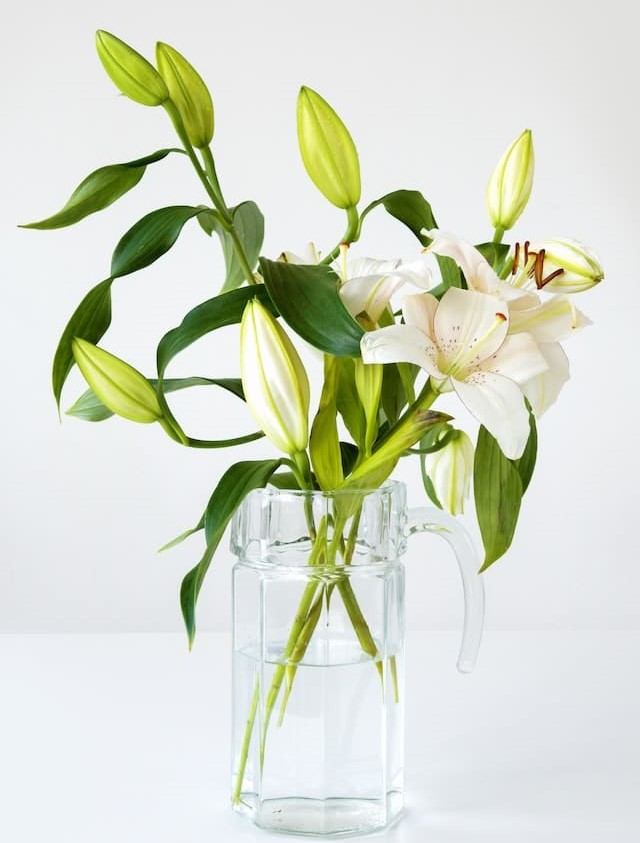
- Extremely poisonous to cats, even in very small amounts. May cause mild symptoms in dogs.
- There are almost 100 different species. May also be found outdoors in the summer.
- All parts of the plant are poisonous, including the leaves, flowers, and pollen, even in small amounts.
- Symptoms include vomiting, diarrhoea, and weakness. Can lead to kidney failure and death.
Other lilies, such as the peace lily (Spathiphyllum) and lily of the valley (Convallaria sp.)
- Toxic to cats and dogs. May also be found outdoors in the summer.
- Symptoms include drooling, diarrhoea, and vomiting.
Philodendron
- Toxic to cats and dogs.
- Symptoms include irritation of the mouth, drooling, and vomiting.
Poinsettias
- Toxic to cats and dogs.
- Symptoms include irritation of the mouth and stomach, drooling, and vomiting.
Sago Palm (Cycas revoluta)
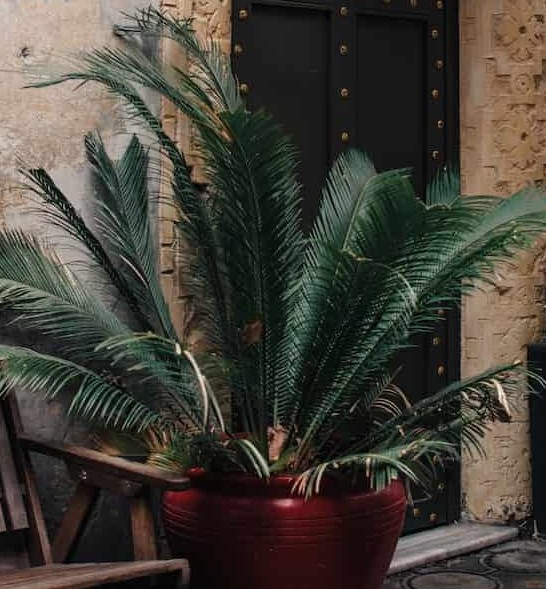
- Toxic to cats and dogs.
- Symptoms include vomiting, bloody diarrhoea, liver failure, and death.
Outdoor
Giant Hogweed (Heracleum mantegazzianum)
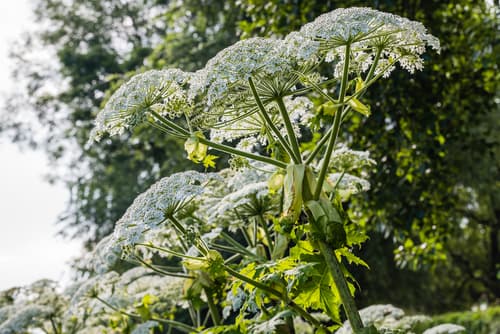
- Toxic to cats and dogs. Present all seasons except winter. Sap has high levels of toxin.
- Stems and leaves can cause irritation and burns to the skin and eyes.
Rhododendron (Azalea)
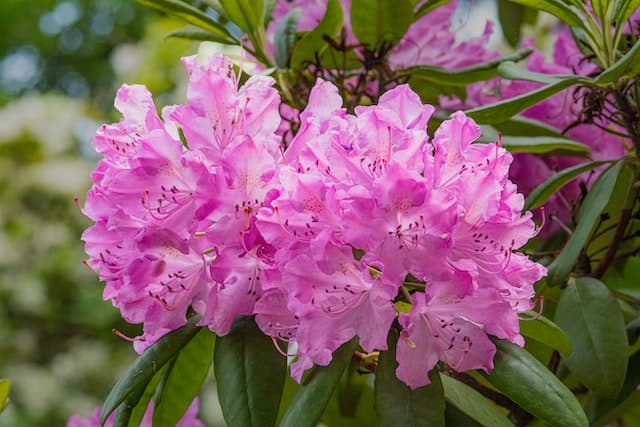
- Toxic to cats and dogs. All parts, including the leaves, stems, and blooms are toxic. Present in all seasons.
- Symptoms include vomiting, diarrhoea, drooling, weakness, lethargy, tremors, and breathing problems.
Water Hemlock
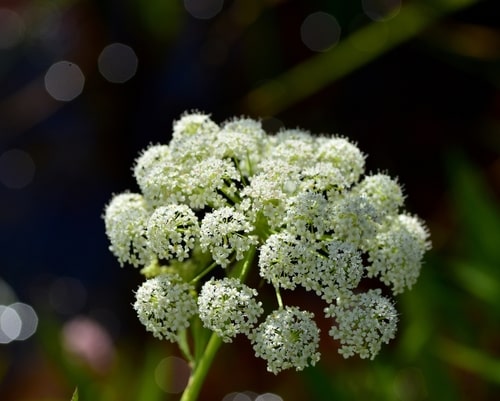
- Toxic to cats and dogs.
- Symptoms include drooling, weakness, agitation, and seizures.
Yew (Taxus baccata)
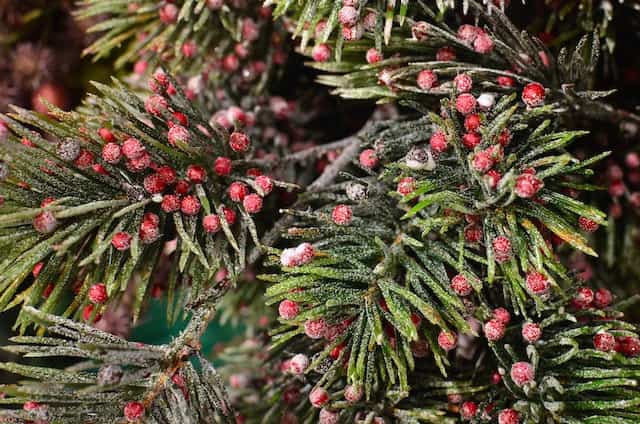
- Toxic to cats and dogs. Present all year round.
- Symptoms include drooling, vomiting, difficulty breathing, and seizures.
Different seasons can bring different hazards
Spring
Daffodils
- Toxic to cats and dogs. The bulb, plant and flower are all toxic. The bulb is the most toxic part.
- Symptoms include drooling, vomiting, diarrhoea, and abdominal pain.
- More severe cases may develop breathing difficulties, tremors, seizures, and heart rhythm abnormalities.
Hyacinth
- Toxic to cats and dogs.
- Symptoms include severe vomiting, diarrhoea, and tremors.
Iris and gladioli
- Toxic to cats and dogs.
- Symptoms include vomiting, diarrhoea, drooling, and lethargy.
Tulips (Tulipa species)
- Toxic to cats and dogs. All parts of the plant can cause symptoms. The bulb is the most toxic part.
- Symptoms include vomiting, diarrhoea, lethargy, and drooling.
Summer
Foxglove (Digitalis purpurea)
- Toxic to cats and dogs. All parts of the plant are toxic.
- Symptoms include vomiting, diarrhoea, weakness, heart failure, and death.
Larkspur (Delphinium)
- Toxic to cats and dogs.
- Symptoms include drooling, vomiting, and diarrhoea.
Oleander
- Toxic to cats and dogs.
- Symptoms include drooling, abdominal pain, tremors, and an abnormal heart rhythm.
Autumn
Acorns (from Oak, Quercus species)
- Toxic to cats and dogs.
- Symptoms include vomiting, diarrhoea, and swelling of the lips.
- Risk of obstruction if swallowed whole.
Horse Chestnut
- Toxic to cats and dogs. The highest risk is in the autumn, when conkers fall. All parts are toxic.
- Symptoms include severe vomiting, diarrhoea, seizures, and collapse.
- Risk of obstruction if conkers are swallowed whole.
Crocus: Crocus vernus in spring and Colchicum autumnale in autumn.
- Toxic to cats and dogs.
- See in spring and autumn. The autumn crocus is more toxic.
- Symptoms include vomiting and diarrhoea. Autumn crocus may lead to liver and kidney damage, seizures, and death.
Winter
Mistletoe
- Toxic to cats and dogs
- Symptoms are usually mild, such as vomiting and diarrhoea. However, if large quantities of berries are eaten, symptoms can be more severe, such as breathing problems and seizures.
How to prevent your pet from coming in contact with poisonous plants
- Make sure to keep all house plants out of reach of your pet.
- Research house plants and avoid buying those that are poisonous for pets.
- Check all bouquets for any toxic flowers before you bring them into the house. Lilies are extremely toxic to cats. Purchase pet-friendly bouquets.
- Do not allow your cat to play with boxes or packaging that contains toxic flowers, especially lilies.
- Check your garden for any dangerous plants. If found, remove or restrict access for your pet.
- Monitor your dog at all times when they are outside.
- Keep your pets away while doing the garden; keep bulbs out of reach at all times; and remove any cuttings immediately. Make sure your pet does not dig up any bulbs or seeds in the garden.
Things to look out for with plant poisoning
Different parts of the plant, such as the bulb, flowers, or berries, may contain higher amounts of the toxin than other parts. Some plants can also irritate the skin or mouth through direct contact.
- The most common symptoms of plant poisoning are vomiting, diarrhoea, drooling, and low energy.
- Symptoms from direct contact include rashes, ulcers, and swelling of the lips or tongue.
- These symptoms can be vague and have many different causes, so it’s important to give your vet a thorough history of any recent contact with or ingestion of plant material.
How to help your pet at home after contact with a poisonous plant
If your pet has chewed, licked, or ingested any plant material, contact a vet immediately to determine if any treatment is needed.
Mild cases
- May be due to the ingestion of moderate amounts of non-toxic or very small amounts of a mildly toxic plant.
- Can develop mild vomiting and diarrhoea.
- Rest and close monitoring at home may be an option.
- Feed a bland or gastrointestinal food, such as Hills Prescription Diet i/d or Royal Canin Gastrointestinal.
- Probiotics such as Yudigest or Pro-Kolin can be useful for diarrhoea.
- Supportive medication from your local vet may be needed, such as stomach protectants.
What’s the treatment after contact with a poisonous plant?
Treatment will depend on which plant your pet has been in contact with. It may also depend on the weight of your pet or any pre-existing medical conditions.
Bring a clear photo or part of the plant with you to your appointment, especially if you do not know the full name of the plant.
Treatment may involve the following:
- If caught early, your vet might make your pet vomit. This will reduce further absorption of the toxin.
- Flushing of the stomach (gastric lavage)
- Hospitalisation for fluids
- Blood transfusion
- Supportive medication for the stomach and other organs
- Blood and urine tests
- Imaging, such as ultrasound or x-ray
Are some pets more at risk than others?
- Puppies and young dogs tend to be more inquisitive, which can lead to them licking or chewing plants.
- Pets with PICA. This is a condition where pets eat things they shouldn’t. It can be caused by behavioural or medical conditions. A pet with PICA may start to chew on plants indoors or outdoors.
- Indoor cats that are bored or curious might be more inclined to lick or chew plants in the home.
- Pets with upset stomachs may feel nauseous, and this can lead to chewing on grass or plants.
When to worry about poisonous plants
Many different plants may cause symptoms in our pets. It is important to note that some plants that are poisonous to cats may not be poisonous to dogs, and vice versa.
Seek help from a vet if
- Your pet has eaten a plant, and you are not sure if it is poisonous or not.
- Your pet has suddenly developed swelling of the lips, tongue, or gums.
- Your pet has eaten a poisonous plant, even in small amounts.
Call us and speak to one of our Joii Vets if
- Your pet has mild vomiting or diarrhoea.
- Your pet has eaten a small amount of a known non-toxic plant.

